
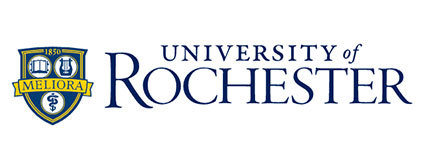
 America — $10,000 in Products
America — $10,000 in Products
University of Rochester, USA – submitted by Shravan Gupta
For the development of a breast cancer screening tool for surgical pathologists to reduce misdiagnosis of breast biopsies by 10x. We enable easy label-free tissue imaging using quantitative confocal phase microscopy technology. Traditionally, pathologists microscopically examine breast tissue and evaluate its morphology (shape, color, growth, cellular features) to diagnose cancer. Breast tissue is chemically processed and stains are added to generate visual contrast. This histopathological examination is an extrinsic method that introduces external chemicals into the specimen. This exam is time-consuming, compromises biological integrity, and requires handling by multiple personnel, resulting in mislabeling and misdiagnosis of specimens. This screening tool streamlines imaging and analysis of specimens by eliminating chemical processing.
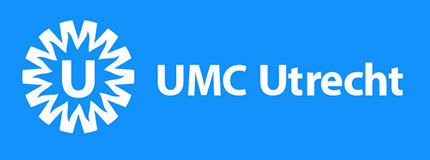
 Europe — €7,000 in Products
Europe — €7,000 in Products
UMC Utrecht, The Netherlands – submitted by Sammy Florczak
Development of a 3D volumetric printing process to enable the fast fabrication of advanced cell-laden scaffolds to repair tissues and organs.
Volumetric printing is a recently conceived 3D printing technique that fabricates structures of any complexity and size in a matter of seconds using tomographic back projection to polymerize a vat of resin. This approach is uniquely fast, layer-less, and scalable. This project aims to develop the next generation of this device and unlock its capabilities for use in tissue engineering. The focus is on improving the device to make it suitable for the fabrication of cell-laden constructs for bioprinting and enable a greater level of resolution, accuracy, and complexity to the printed structures – thus recapitulating functional tissues more faithfully. This is achieved using clever light-structuring techniques in addition to novel computational approaches.
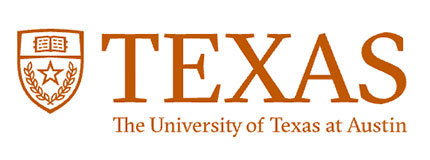
 Americas — $7,500 in Products
Americas — $7,500 in Products
University of Texas at Austin, USA – submitted by Christian Jennings
For the construction of a novel flow cytometer that combines nonlinear broadband coherent anti-Stokes Raman scattering (BCARS) spectroscopy and real-time deformability cytometry (RT-DC) to holistically evaluate individual pancreatic cancer cells. Malignant cancers are often treated with a combination of chemotherapeutics, immunotherapeutics, radiation, and resection. However, even with a multifaceted approach, tumor cells can, and will, inevitably survive. These surviving tumor cells are implicated with tumor resurgence and metastatic lesion formation that is the leading cause of cancer-induced death. The root of this problem is that tumors are an inherently, mechanically, and biochemically heterogeneous population of cells, which results in differential treatment efficacy. This project proposes conjoining broadband coherent anti-Stokes Raman spectroscopy (BCARS) and deformability cytometry (DC) in a novel, high-throughput mechano-chemical flow cytometer (MCFC) platform. Ideally, a commercial MCFC would be used to measure the heterogeneity of a patient-derived tumor sample and use that data to predict the susceptibility of the tumor to individual chemotherapeutics as well as potential invasivity (metastaticity) of chemotherapeutic-derived (surviving) cells.
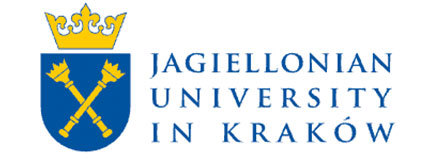
 Europe — €5,000 in Products
Europe — €5,000 in Products
Jagiellonian University, Poland – submitted by Justyna Labuz
Real time detection device for UV and visible light induced chloroplast movements through simultaneous recording of changes in red light transmittance and reflectance of plant leaves.
Chloroplasts contain a blue/red absorbing chlorophyll, so their movements result in changes of leaf transmittance and reflectance. Chloroplast movements are vital to maximize energy harvesting in low light and protect the photosynthetic machinery against high light damage. They are usually detected through measurements of leaf transmittance changes. Thanks to reflectance recordings, this device will be well-suited for studies on crops with optically dense leaves. The two actinic beams will pass through achromatic optics (one path for visible light, the second for ultraviolet). This will allow for determination of action spectra and ensure that the device is suitable for different species or light settings (e.g. simulated sunlight). This device will be hugely beneficial for agricultural research and will contribute to studies for improving crop yield and the engineering of crops that are more resilient to environmental stress. As we continue to battle climate change, this type of work is becoming even more important.
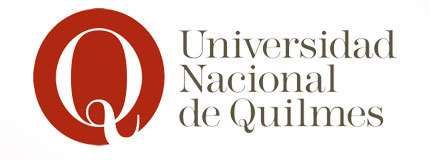
 Americas — $5,000 in Products
Americas — $5,000 in Products
Universidad Nacional de Quilmes, Argentina – submitted by Damian Presti
For the development of a low-cost biophotonic device capable of detecting COVID-19 in low-income settings. In recent years, countries have suffered epidemics associated with viruses, like Dengue, Zika, and, more recently, COVID-19. It is necessary to have faster and more economical diagnostic tools that allow for the evaluation of symptomatic patient samples. Keeping this objective in mind, diagnostic systems called point of care have been recently developed. These systems are defined as medical diagnostic testing at or near the point of care. This biophotonic device excites the sample with light and triggers a spontaneous emission of the fluorophore bound to the specific probe. The emitted fluorescence is suitably filtered using interferential filters. Under these conditions, a signal is registered in a built-in detector and, depending on this signal, resolves the case as positive or negative.

 Europe — €3,000 in Products
Europe — €3,000 in Products
Instituto Superior de Engenharia de Lisboa , ISEL, Portugal – submitted by Paulo Lourenço
Development of a point-of-care detection platform prototype for acute kidney injury, based on a photonic integrated circuit containing an array of interferometric plasmonic sensors.
Acute Kidney Injury (AKI) is a complex disease with multiple causes, and there is a high probability that a sole biomarker is not sufficient for an early diagnosis of this disease. Hence, a panel of biomarkers may be necessary for correct detection of AKI. Neutrophil gelatinase-associated lipocalin (NGAL) is emerging as an excellent biomarker for the early prediction of AKI, however there is still demand for improved outcome. The simultaneous measurement of urinary Interleukin 18 (IL-18), NGAL, cystatin C, and Kidney Injury Molecule 1 (KIM-1) would likely be able to achieve accurate and early diagnosis of AKI and, ultimately, could help guide patient management. The sensor interrogation method proposed in this project aims to overcome existing limitations by implementing an array of interferometers that work in parallel. An output reading based on the comparison of the output produced by the different arms of the array would greatly increase the accuracy of the diagnostic.
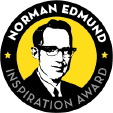
The Norman Edmund Inspiration Award is awarded to the program that best embodies the legacy of Edmund Optics' founder Norman Edmund.
University of Hawaii at Manoa, USA – submitted by Yi Zuo
In the past decade, we have trained undergraduate students, graduate students, and postdoctoral researchers in instrumentation for biomedical applications. The instrumentation projects we conducted involve advanced designs of optical systems for studying droplets and bubbles. The intrinsic difficulty that comes with imaging liquid-liquid interfaces of a drop or bubble is the low optical contrast due to similar refractive indices. We have routinely relied on Edmund Optics as our source for quality and affordable optical parts. We have invented and developed novel instruments using these optical components that allow for evaluating biophysical properties of lung surfactant and other chemicals highly relevant to clinical and physiological applications. Many of our trainees have grown into the next generation of engineers, researchers, and faculty who work in the fields of optical and biomedical research worldwide.
About the Norman Edmund Inspiration Award
30 global EO Educational Award finalists were be eligible for the Norman Edmund Inspiration Award – an additional $5,000 USD in product donations.
The Norman Edmund Inspiration Award was determined at the sole discretion of the Edmund Optics Board of Directors Committee and awarded to the program that best embodies the legacy of Edmund Optics' founder Norman Edmund. Mr. Edmund has been the creator and entrepreneurial spirit behind Edmund Scientific, which later evolved into Edmund Optics. He is credited with inspiring many generations of young talent to become interested in science and engineering through his thought-provoking catalog of optics, science experiments, and learning tools. He is remembered by all for his generosity, curiosity, and love of science.

ou consulter les numéros d’autres pays
facile à utiliser
entrer les numéros de stock pour commencer
Copyright 2023 | Edmund Optics, Ltd Unit 1, Opus Avenue, Nether Poppleton, York, YO26 6BL, UK
L'entreprise Edmund Optics GmbH en Allemagne agit comme un mandataire d'Edmund Optics Ltd au Royaume-Uni. Le titulaire du contrat est Edmund Optics Ltd au Royaume-Uni.